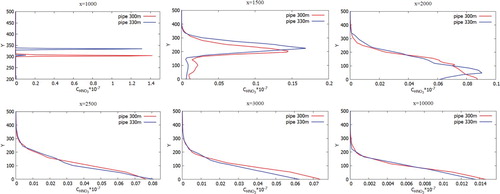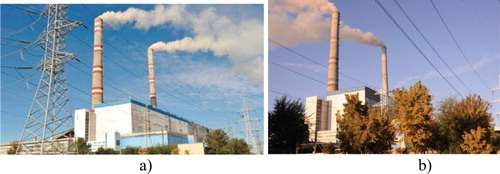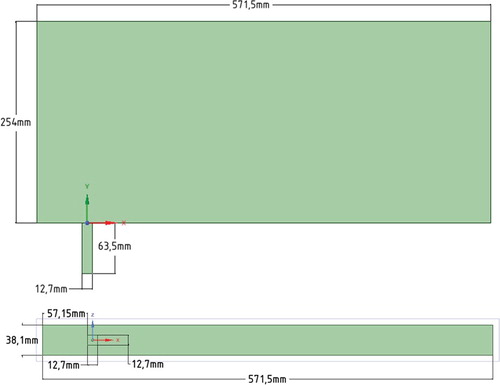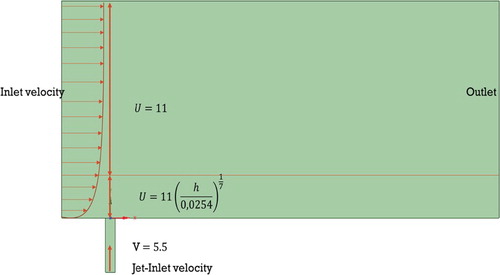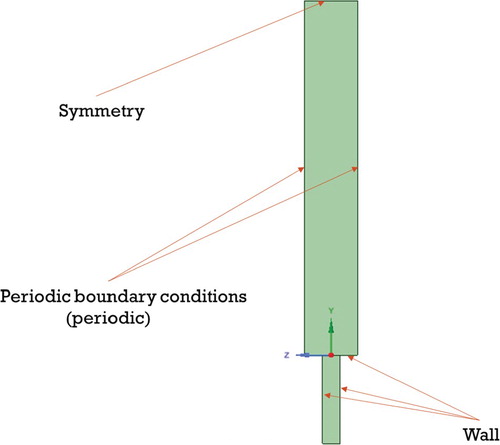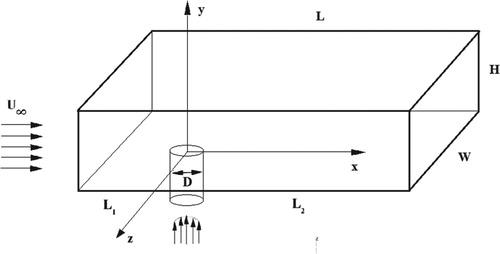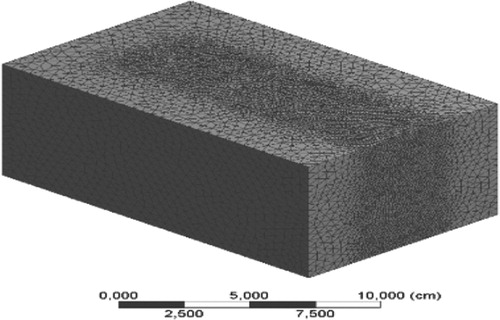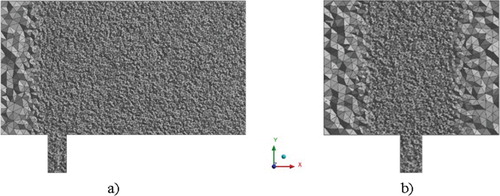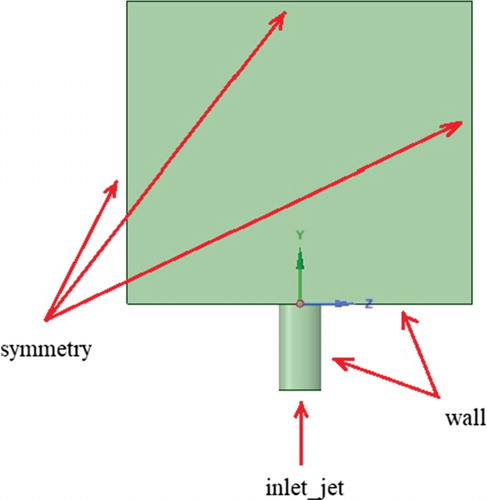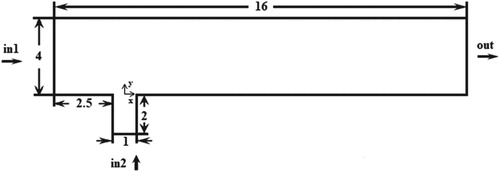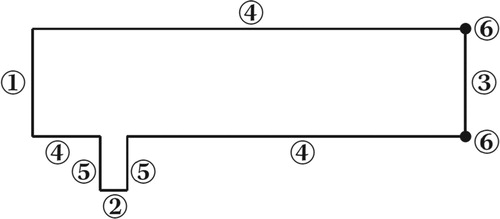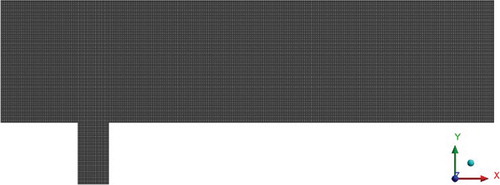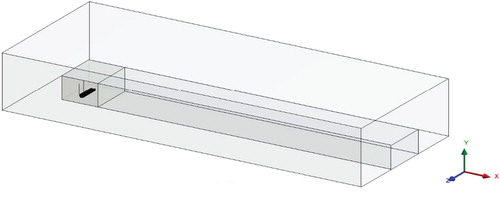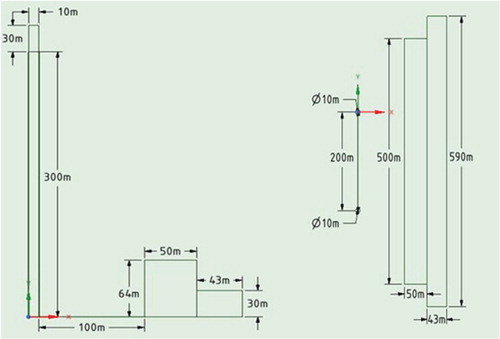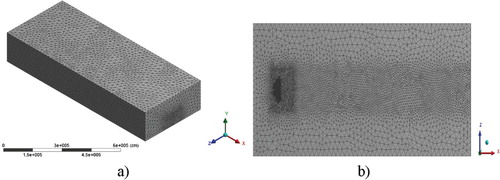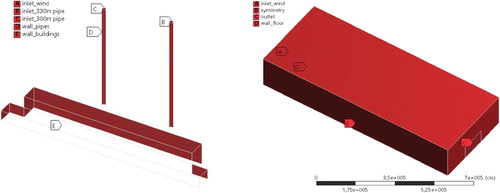Figures & data
Figure 13. Mean flow rates in the central plane, z/D = 0: (Crabb et al., Citation1981) (o), Majander & Siikonen (Citation2006) (-) LES (-).
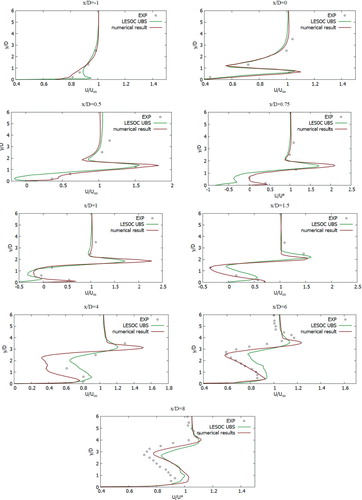
Figure 14. The mean proportion of the mixture in the central plane, z/D = 0: (Crabb et al., Citation1981) (o), Majander & Siikonen (Citation2006) (-) LES (-).
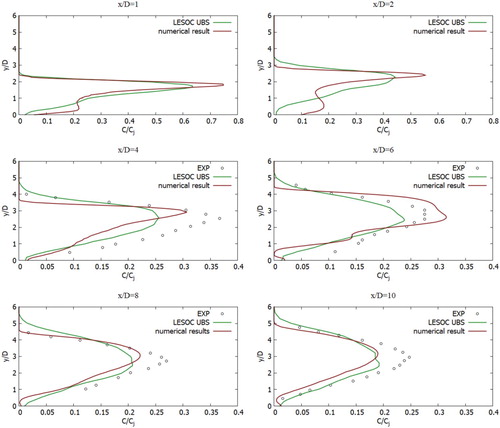
Table 1. Sequence of variables and equations at the boundaries of the 
 –
–
 domain.
domain.
Figure 18. The velocity streamlines comparison: the upper result is the calculations of Schonauer and Adolph (Citation2005), the lower result is the obtained results in this work.
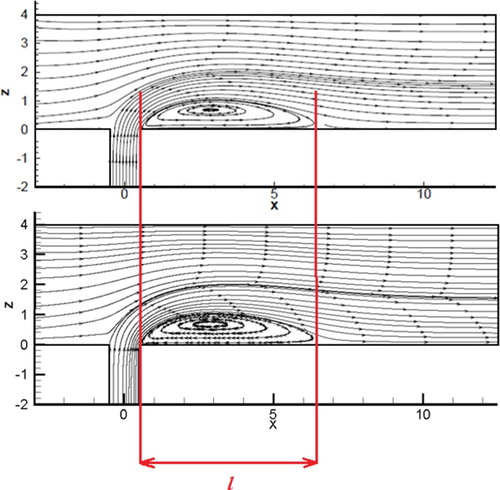
Figure 19. Comparative velocity contour analysis: left plots – results from Schonauer and Adolph (Citation2005), the right-hand plots are the values obtained in the course of this work: (a) horizontal speed u (b) vertical speed v.
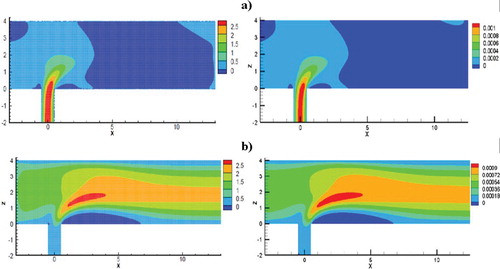
Figure 20. Comparative analysis of the results of the substance distribution: the left graphs – the values of Schonauer and Adolph (Citation2005), the right-hand plots are the obtained results in this work: (a) concentration of substance A, (b) concentration of substance B, (c) concentration of substance C.
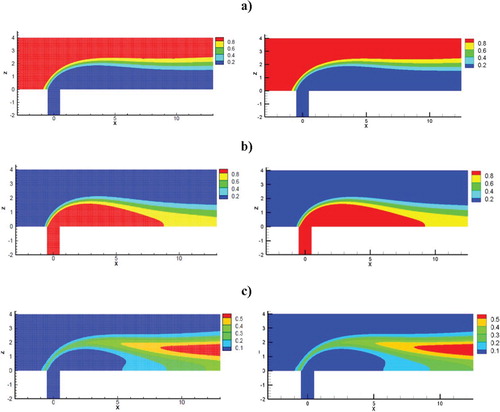
Table 2. Parmameters of species.
Table 3. Parmameters of geometry.
Figure 27. Visualization of the spread of concentrations: (a-d) CO and CO2, (e-h) NO and NO2, (i-l) NO2 and HNO3.
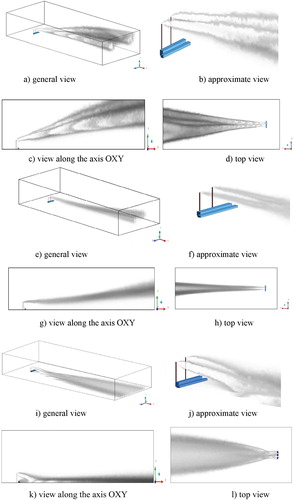
Figure 28. Comparison of profiles of the CO, CO2 mass fractions in points: x = 1500, 2000, 2500, 3000, 10,000 and z = 2000.

Figure 29. Comparison of profiles of the NO, NO2 of mass fractions in points: 1500, 2000, 2500, 3000, 10,000 and z = 2000.

Figure 30. Comparison of profiles of the H2O, NO2, HNO3 mass fraction in points: 1500, 2000, 2500, 3000, 10,000 and z = 2000.

Figure 31. Comparison of profiles of the CO mass fraction at specified points for two various heights of chimneys (300.0 and 330.0 m).
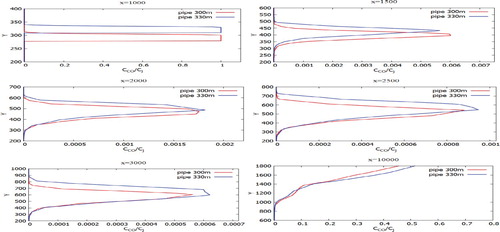
Figure 32. Comparison of profiles of the NO mass fraction at specified points for two various heights of chimneys (300.0 and 330.0 m).
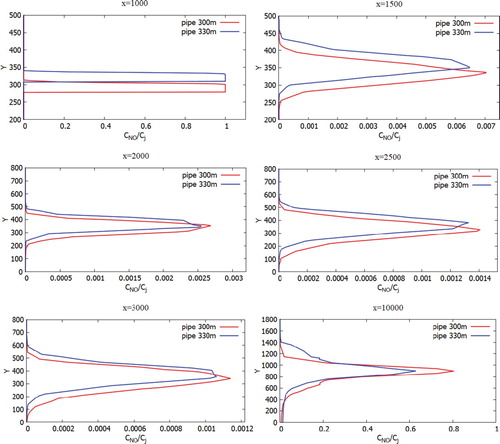
Figure 33. Comparison of profiles of the H2O mass fraction at the specified points for two various heights of chimneys (300.0 and 330.0 m).

Figure 34. Comparison of profiles of the CO2 mass fraction at specified points for two various heights of chimneys (300.0 and 330.0 m).

Figure 35. Comparison of profiles of the NO2 mass fraction at specified points for two various heights of chimneys (300.0 and 330.0 m).
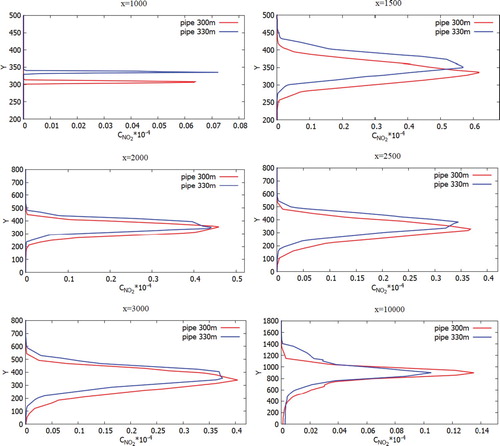
Figure 36. Comparison of profiles of the NO2 mass fraction at the specified points for two various heights of chimneys (300.0 and 330.0 m).
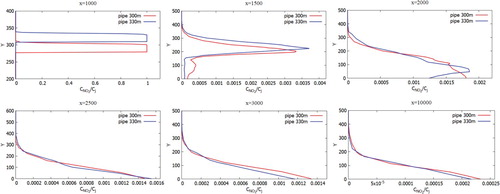
Figure 37. Comparison of profiles of the HNO3 mass fraction at the specified points for two various heights of chimneys (300.0 and 330.0 m).
